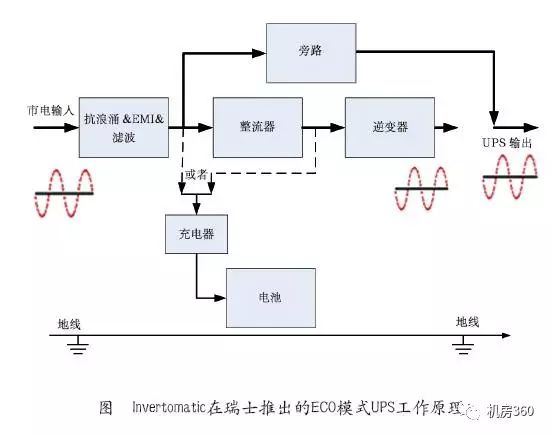Nowadays, with the development of technology, the power loss of static UPS gradually decreases. Early on-line UPS with thyristor technology (referred to as double-conversion UPS or IEC "VFI") with input and output transformers has a full-load operating efficiency of only 83% to 85%. At present, the full-load efficiency of the high-frequency online interactive UPS using IGBT technology can reach 95% to 97%.
Today's UPS's energy efficiency has increased by 15%, while cooling demand has declined, increasing its reliability. The mean time between failures (MTBF) of the modular UPS increased from less than 25,000 hours to 150,000 hours; the output voltage waveform distortion was reduced from 5% to 1%; the noise was reduced from 95dB(A) to 70dB(A); Even reduced by 90%. Even with a double-conversion UPS, the efficiency is 96.8%, and the cost per kilowatt capacity has dropped to the lowest level ever. This is good for the user, but the only way for the vendor to profit from UPS is to provide after-sales service. UPSs produced by European manufacturers have basically eliminated transformers. In North America, transformerless UPSs are still a new thing. Manufacturers like APC also use online interactive topologies. Although there is no frequency protection, it is not technical. The "online" style, though this is the case, the UPS of this architecture still works well in a stable grid. In the 1990s, Invertomatic launched the economic model UPS (ECO mode, working principle) in Switzerland, but the market sales situation is not optimistic. The modular UPS introduced by industry vendors then solved part of the load problem in most data centers. The principle of the economic model is very simple: when the mains is stable, the UPS automatically switches to the bypass mode to reduce power loss, especially the UPS without transformer design. In this mode, the UPS rectifier still works to charge the battery (requires a flywheel UPS) The power is much lower, and the inverter is in standby mode. The bypass (thyristor switch) is turned on to supply power to the load until the power is abnormal. At this time, the static switch of the UPS transfers the load to the inverter and operates in this mode. A significant disadvantage of UPS is that there is no improvement in power quality when the UPS is operating in bypass. 
There are now some "advanced" economic models with UPS switching times of 2ms instead of 4ms. Some will monitor load distortion and make decisions about the grid, but the basic idea remains the same. If the power is stable, then you can save energy.
However, this is usually risky, and the economic model is no different. Whenever there is a deviation in power, the load switches from bypass to normal mode, which is exactly the opposite of the protection provided by the double-conversion UPS. This switching represents a risk to the load, and although this risk may be small, users must balance their returns.
With the rise of electricity costs and the promotion of concepts, economic models have been accepted, but efficiency is not always the most important indicator that users expect.
UPS with silicon carbide (SiC) is more energy efficient
The UPS operating in an economical mode has great advantages, but the combination of the newly developed silicon carbide technology and the economic model will have a greater advantage. At present, transistor manufacturing is a traditional thyristor device. For UPS, the function of insulated gate bipolar transistor (IGBT) is more and more powerful and reliable.
However, UPS with IGBT devices has a significant disadvantage. The faster the switch is faster (to achieve higher accuracy), the higher the power loss. This is mainly because the upper limit of module efficiency is 96.8%, and with silicon carbide devices, the efficiency of double conversion UPS can theoretically be increased to 98% to 99%.
Synthetic silicon carbide powder has been mass-produced since 1893, and IGBTs made with silicon carbide are initially expensive, but energy-saving effects are also significant, and all of these will not transfer critical loads to the grid without increasing electricity. The risk of conversion. At the module level, silicon carbide has two main benefits: smaller chip size and lower dynamic losses. At the system level, these advantages can be exploited in a variety of ways. The low dynamic losses result in a significant increase in output power, which will provide opportunities to reduce weight and volume. It is worth mentioning that the power can be increased without additional cooling capacity, because silicon carbide brings about a real loss reduction compared to a thyristor device, and can achieve higher output power under the same cooling conditions. Low power losses increase energy efficiency and allow for the design of more efficient inverters, so applications are more energy efficient on UPS.
Dongguan Guancheng Precision Plastic Manufacturing Co., Ltd. , https://www.dpowergo.com